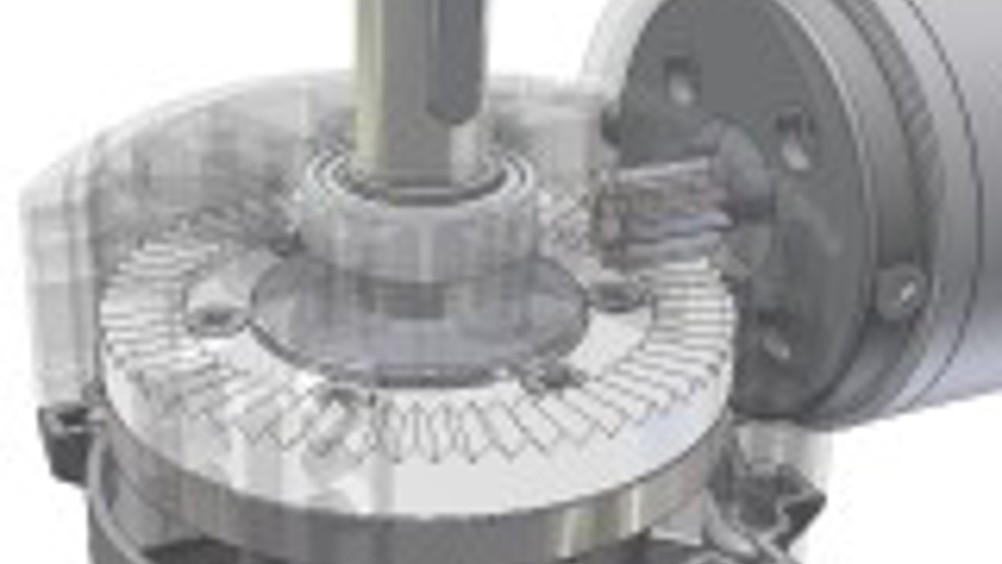Straight cut crown makes efficient reduction
A range of gear motors is able to achieve 90% efficiency in speed reduction gear trains of up to 1:10 ratio by making use of a new design of crown gear.

Crown and pinions are widely used in the back axles of all traditional rear-wheel drive vehicles, but are normally bevelled and usually have helical teeth as well. This complicates manufacture and adds cost. German manufacturer Zeitlauf, however, has come up with a design in which both the pinion and crown gears are straight cut and meet at 90º to each other. Examination of gear parts shows that the teeth of the crown gear have different geometries at the inner and outer circumferences of the gear, in order to mesh with the pinion gear along the full length of the teeth. The teeth are the same height at both ends, but narrower on the inside.
According to Martin Mika, the engineering and development engineer who has spent the last three years developing the EtaCrown: “The machining was the problem. You need a tool which is very small, because of the tapered teeth.”
This was eventually solved by using a cutting tool that reproduces the shape of the pinion, cutting the crown gear teeth with its outer edges as it is reciprocated along its axis.
“It makes 5,000 moves per minute,” says Mika.
The cutting machine has been developed with a Swiss company, but Zeitlauf has the patent.
Gear motors with a single speed reduction stage produce an output torque of up to 4Nm. Motors with two reduction stages can achieve speed reductions of up to 100 and produce output torques of up to 10Nm. Efficiency is then about 80%, which is still much better than a worm drive. Applications are mainly seen in driving conveyors, lift, bus and train doors










